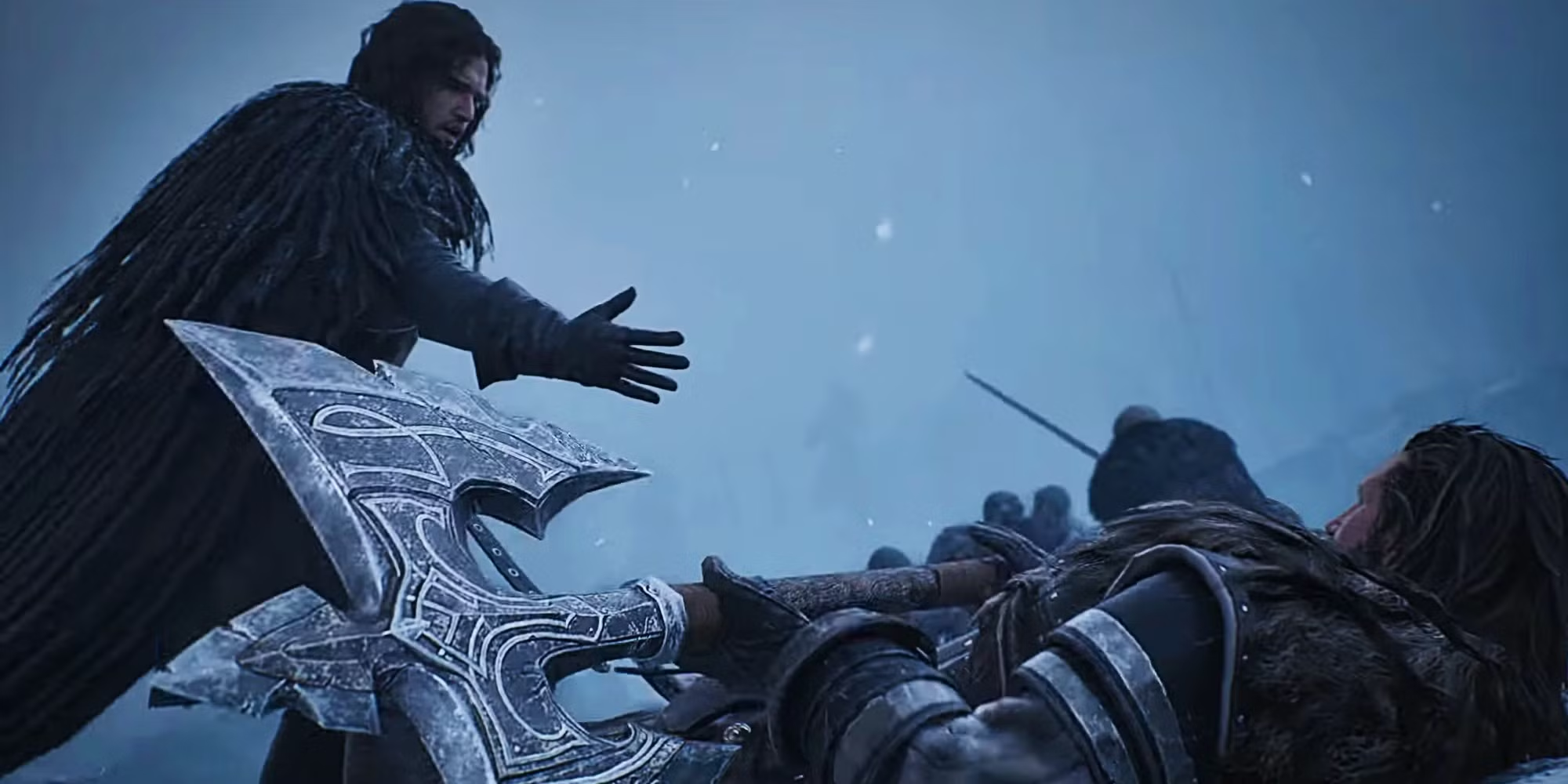This interview includes spoilers for the Season 5 finale of “Outlander.”
Five years ago, just before the first major rape scene in “Outlander” aired, a sexual assault in another show, “Game of Thrones,” set off a storm of controversy.
That brief rape scene, involving the beloved Sansa Stark, triggered outrage because of the way it had been filmed, focused largely on the reaction of a male observer; “Outlander” producers worried that their longer and more explicit rape scene could trigger an even bigger backlash. (“I thought, “Oh God, if this is the reaction to ‘Game of Thrones,’” recalled the executive producer Maril Davis.)
As it turned out, they needn’t have worried. The episode, in which Jamie (Sam Heughan), a male character, is raped at Wentworth Prison, was praised for the way the assault was handled. But over the years, as sexual attacks became common on the show, they became an increasingly difficult sell, especially when they involved Claire (Caitriona Balfe), who suffered several attempted rapes during her journeys to the 18th Century but wasn’t given as much time as other characters to process them.
In the Season 5 finale on Sunday, Claire was victimized once again, this time in a shocking gang rape — an event that was moved forward in the narrative from Book 6 of the best-selling novels by Diana Gabaldon on which the series is based. (The season mostly stuck to Book 5, with a few notable exceptions.)
How will fans react? What did the creative team consider as it wrote and filmed the scene? In a series of phone interviews, Gabaldon, Balfe (who became a producer in Season 5) and Matthew B. Roberts, who co-wrote the episode with his showrunning partner, Toni Graphia, examined the show’s use of sexual violence, its therapeutic value and the criticism. These are edited excerpts from the conversations.
Why do you think rape is such a recurring event, character forge and plot catalyst in “Outlander”?
CAITRIONA BALFE: Sexual assault and rape is so prevalent in society — one out of every six women has been a victim of an attempted or completed rape in the United States. That’s a crazy statistic! We have a problem in our society with sexual assault, and it’s reflected in our storytelling.
DIANA GABALDON: Some readers of the books will come after me and say, “Don’t you think this is rapey?” It depends on your perspective. You should take a step back and ask, “What was the aim?” Was I just trying to be sensationalistic? Well, no. I don’t need to be. But I had a point, and it has a lot to do with the resilience of the human spirit. We’re not treating rape as just a destructive thing that ruins a person’s whole life. We’re showing it as it is. It is terribly traumatic and damaging, but people do recover. How did they get over it? What happens to them as a result? The story offers you a wide emotional canvas for exploration, most of which is not concerned with the actual violent encounter.
MATTHEW B. ROBERTS: A lot of these tentpole moments from the books are violent and meaningful to the characters: Jamie’s rape, Brianna’s rape, Jamie beating Roger [played by Richard Rankin] nearly to death, Roger getting hanged, Claire’s rape. How do we not show these things? If we said, “All right, let’s not show Jamie’s rape, let’s just have him say, ‘I was raped,’” to me, the impact would have been massively diminished. We have to go: “This is Jamie being raped. This is Roger being beaten.”
But our intentions are not to be gratuitous. We’re not after water-cooler moments. We’re trying to be true to characters and the books. Sometimes the books are more graphic, and then we pull back a little bit.
“Game of Thrones” received intense scrutiny for the ways in which it portrayed rape. Did you learn anything from that about the “right” way to do this? How has “Outlander” tried to distinguish itself in that regard?
GABALDON: I don’t know what “Game of Thrones” did. I read a few reviews in which they mentioned that someone was being raped in the background. That seems to be the salient point, that it wasn’t always part of the actual story, probably intended to give you some idea that the prevailing attitude of this culture was that women were disposable.
The thing that’s different with “Outlander” is that when there is a violent sexual encounter, the person who is raped is never treated as part of the scenery. We’re showing that each rape is unique. What happened to Brianna [Sophie Skelton] is quite different from what happened to either of her parents. With Jamie’s experience, he was being hunted by a man who wanted not only to possess his body but also to destroy him emotionally. And Black Jack [Tobias Menzies] nearly succeeded. Brianna, meanwhile, was in the wrong place at the wrong time.
BALFE: If we’re going to tell these kinds of stories, we have to highlight something that hasn’t been in the public eye, so we can start conversations. With Jamie’s recovery in Seasons 1 and 2, we dealt with something that hadn’t really been explored much on TV, which was the idea of male rape. With Claire, it’s the psychological mechanism of disassociation.
ROBERTS: I personally don’t read all the critiques, whether good or bad. It’s hard to write a show by poll or by committee. When we sit down in the room, we let all that stuff go. We talk about the characters. We talk about the story.
What was the discussion like to determine how to depict Claire’s gang-rape?
BALFE: We had so many conversations about how to empower Claire. You never really see the attackers. We didn’t want to give them any space. One of the shows that did that really well was Netflix’s “Unbelievable.” That was something we talked about, in terms of how we were going to shoot it.
ROBERTS: We’ve had multiple assaults on the show, and we were wondering how Claire survived hers, because emotionally, it doesn’t seem to affect her in the books as much it did Jamie or Brianna. How was Claire able to survive in a different way? I thought, if we show her leaving her body to go into the dream-escapes, that could mitigate what’s happening visually. When you see a guy walk over to her and then we cut out into the dream-escape, the audience fills in, “Something bad’s going to happen.” We can walk that fine line of showing it, and not showing it.
Originally, the dream-escapes were ramped up even more. We were going to feel like Claire had been raped, but not know how. I remember discussing this with Caitriona and Sam Heughan, and Caitriona was a force here. She said, “How come we can’t show more of the attack?” And Sam said: “Yeah. With Jamie we showed a lot.” So we realized we can go a little further than the book did.
GABALDON: The show is actually more explicitly brutal than the book; Claire is only penetrated by one man in the book, who is not violent about it. But the thing is, I didn’t want Claire to be damaged internally. I would assume that people know that if a woman is gang-raped, it’s very bad for your insides. Repeated, penetrating rape causes extensive hemorrhaging and other damage, and you could die from the blood loss.
BALFE: I felt that if we were going to do the dream-escapes, we had to keep in mind why. They’re not a gimmick, not a reason to wear cool costumes. Claire is experiencing something terrible. This has to show the progression of her mental state, to show that she’s reached a breaking point, that she’s snapped in some way, and is trying to stay in one piece.
In the earlier drafts, Claire had a lot of dialogue. I felt that if she speaks, she is not going to be constructing a conversation about cooking or anything. She’s going to say the only thing that she can say in that reality. She says, “No,” and she says, “Jamie.” This is her grasping onto moments in her life that make her safe and comforted. But no matter how hard she tries to create that protective layer, the sheer horror of what’s happening bleeds into the dream-escape.
An early criticism of the series was that male victims were given more time to recover than female victims. Brianna, however, was given a lot more recovery time. Was that a course correction in the writing? Will Claire now be getting more recovery time?
ROBERTS: With Brianna, we felt we couldn’t just sweep her rape under the rug. We’re voyeurs with these characters, seeing them in intimate moments, when their armor is down. One of the movies that has always impacted me was “The Accused,” which looked at how society responds to a gang-rape victim. We’re in a different time and place, but we can look at not just how society responds, but how the victim suffers, how everybody around that victim suffers, how relationships are affected by it. With Claire, we flipped it from the books with the after effects, how she and Jamie react after the rape.
GABALDON: There is a necessary difference between the book and the show. In the book, Jamie makes a pretext to invite Claire to have sex more or less immediately. He’s afraid that if he doesn’t get her back right now, she may not be able to come back to him at all emotionally. And so they have this very intense sex with Claire working through what might be called post-traumatic stress. She’s physically violent. She’s coming to terms with her rape, and Jamie sustains her — he’s her source of refuge. But that’s not the sort of thing that happens to most people who undergo experiences like this. They’re traumatized physically. They huddle into themselves. They don’t want to talk about it to people who weren’t there, who won’t understand. Jamie wasn’t there, but he certainly understands, and that makes a huge difference in terms of her recovery.
BALFE: I think that if you read that scene in the book, you see that as Jamie giving Claire confirmation that she’s still lovable and desirable. But if you film that, I don’t think it would come across in that way. I think it would come across as Jamie taking away Claire’s agency in deciding when she’s ready for that kind of thing. So we did have a lot of discussions about trying to make Claire’s recovery as respectful and empowering as we could. Her road to recovery will continue into the next season. I think the danger with Claire being considered a strong female character is that sometimes people forget that she is not Teflon. Things can hurt her deeply. And we need to show that strength is not just walking through life and things not affecting you. Nobody is like that. That’s not human.
Why do you think the “Outlander” fans have been willing to go along with these narratives, when other shows have seen some viewers tuning out when they felt they’d seen one rape too many?
ROBERTS: Certainly for the readers, they know what’s coming. They’re prepared for it. They might not know how we’re going to visually portray it, but they knew in Season 1 that Jamie was going to get raped, and they knew in Season 4 that Brianna was going to get raped.
GABALDON: A couple of years ago, I asked people who have been victims of sexual violence what they think about how these incidents are handled. I put a note on my Facebook page, and within 24 hours, I got back an immense outpouring from people. And all of them said things like: “Your story gave me hope that I could heal, that I could overcome this. It made me feel better.”
Almost all of them shared horrifying details of what had happened to them. Some said they were grateful that Jamie acknowledged that he was unwillingly compelled to have an orgasm when he was raped, because that had happened to them, too, and they felt just awful about it. They said, “You helped me realize that it was not my fault.” [Stifles a sob.] I choke up a little bit when I talk about emotional stuff like that.




















![[Book Review] The Blade Itself (The First Law Trilogy) by Joe Abercrombie](https://bendthekneegot.com/wp-content/uploads/2018/01/1516047103_maxresdefault-218x150.jpg)

















